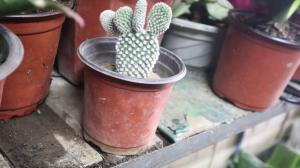Introduction
Aloe vera is a popular succulent plant that has been used for medicinal and cosmetic purposes for centuries. It is known for its thick, spiky leaves that contain a clear gel-like substance that can be used topically to treat burns and other skin conditions. While aloe vera is relatively easy to care for, one of the most important factors to consider when growing this plant is how much sun it needs. In this article, we will take a closer look at the ideal amount of sunlight for an aloe vera plant.
Sunlight Requirements for Aloe Vera
Aloe vera is a sun-loving plant that thrives in bright, indirect sunlight. This means that it needs plenty of light to grow and thrive, but direct sunlight can be too intense and can cause damage to the plant. As a general rule, aloe vera plants should be placed near a window that receives bright, indirect sunlight for at least six hours a day. In the summer months, when the sun is more intense, it is best to provide some shade or move the plant away from the window during the hottest part of the day.
Signs of Sun Damage
If an aloe vera plant receives too much direct sunlight, it may begin to show signs of sun damage. These can include brown or gray spots on the leaves, or a yellow or orange tint to the leaves. In severe cases, the leaves may become crispy and dry, or they may begin to curl or fold in on themselves. If you notice any of these symptoms, it is important to move the plant to a location with less direct sunlight and to water it regularly to help it recover.
Tips for Growing Aloe Vera
In addition to providing the right amount of sunlight, there are a few other things to keep in mind when growing aloe vera. Here are some tips to help you keep your plant healthy and thriving:
Use well-draining soil to prevent water from accumulating around the roots.
Water your aloe vera plant deeply and then allow the soil to dry out completely before watering again.
Fertilize your plant once a month during the growing season with a balanced, water-soluble fertilizer.
Keep your plant at a temperature between 60 and 75 degrees Fahrenheit.
Repot your aloe vera plant when it outgrows its container or when the soil becomes too compacted.
Conclusion
In conclusion, aloe vera plants need bright, indirect sunlight for at least six hours a day in order to grow and thrive. Direct sunlight should be avoided as it can cause sun damage to the leaves. If you notice any signs of sun damage, such as brown spots or curling leaves, it is important to move the plant to a location with less direct sunlight and to water it regularly. By following these tips, you can help ensure that your aloe vera plant stays healthy and beautiful for years to come.

 how many times do yo...
how many times do yo... how many planted tre...
how many planted tre... how many pine trees ...
how many pine trees ... how many pecan trees...
how many pecan trees... how many plants comp...
how many plants comp... how many plants can ...
how many plants can ... how many plants and ...
how many plants and ... how many pepper plan...
how many pepper plan...






























